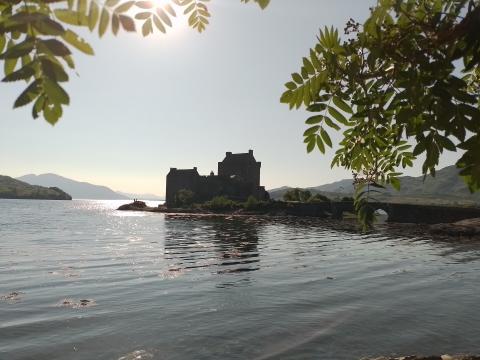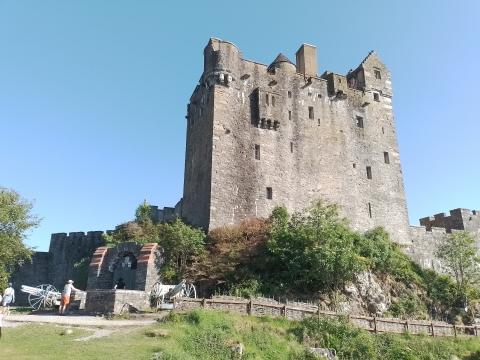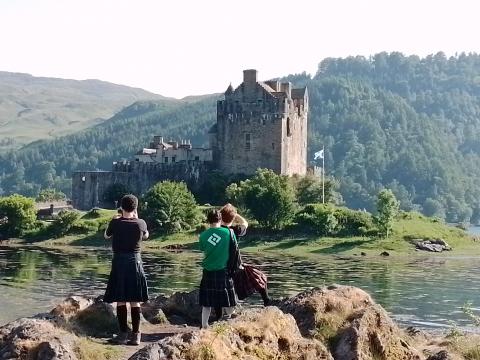Eilean Donan

I admit it. I sometimes preen with pride when I can accurately date a building. A smile of smug satisfaction will form on my lips when I successfully ascribe a certain church window or side chapel to a correct half-century based upon its carving and size, only to have the guidebook or info board confirm my assessment. It is not a skill which earns me any money or esteem, unlike kicking a football or reciting some lyrics, but it is still satisfying.

So imagine my shame when I misjudged the construction of a major building by 500 years. My relatives and I were returning from the Isle of Skye last month when we came across Eilean Donan Castle. This is perhaps the most iconic of Scottish castles, a grim fortress plonked in the most beautiful of settings- a confluence of three sea lochs (Alsh, Duich and Long) in the Highlands. The castle is very obviously Scottish, and is a good example of early Scots Baronial stye. I estimated it to be a sixteenth-century fortress with sections dating from the fifteenth. In fact, it was destroyed in 1719 by the Royal Navy on account of its owners harbouring sympathy and weaponry for the Jacobites. The building we see today went up in the twentieth-century during the inter-war years, so my own grandmother was alive when it was being built. My mistake might be forgiven; the modern builders must be complimented on their successful imitation of the style of their ancestors, rather than the fashionable art deco in which contemporary buildings were erected. Although, in truth, I am no great authority on architectural chronology, I was easily fooled; a medieval clansman would have felt at home in this modern castle, yet it is still younger than my house.

When Christians talk about the gospel, they are referring to a rescue mission whose planning was accomplished in eternity, though it was executed in history. The Father, the Son and the Spirit all agreed to restore the future created world which they fully knew would be spoilt and ruined by the Falls of angels and humans. The gospel was no knee-jerk reaction to a last minute emergency, but an old covenant and promise fulfilled and honoured. In Hebrews 13:20 we read:
Now the God of peace, that brought again from the dead our Lord Jesus, that great shepherd of the sheep, through the blood of the everlasting covenant…
Apart from the gospel, any religious programme, pathway, initiation or system of salvation and ritual is a modern counterfeit, a manmade substitute of questionable vintage that dares to compete with God’s ancient and pre-historical redemptive purpose. The origins of Hinduism, for example, disappear into the swirling mists of history, but its claim to rescue one from Samsara by granting one release to Moksha is a relatively modern substitute for a much older and loftier rescue mission:
But the mercy of the Lord is from everlasting to everlasting upon them that fear him, and his righteousness unto children's children. Psalm 103:17
Accept no modern substitutes. Do not overestimate a religion's claims; if they post-date the Fall, they are themselves fallen.

I was pleased to get a few shots of the castle with bekilted young men looking upon it. These were not local Scots paying court to their clan chief, but Central European holidaymakers enjoying the full Highland experience, and dressing the part.
- Log in to post comments


 Sunday Worship 10.45am & 6.00pm
Sunday Worship 10.45am & 6.00pm